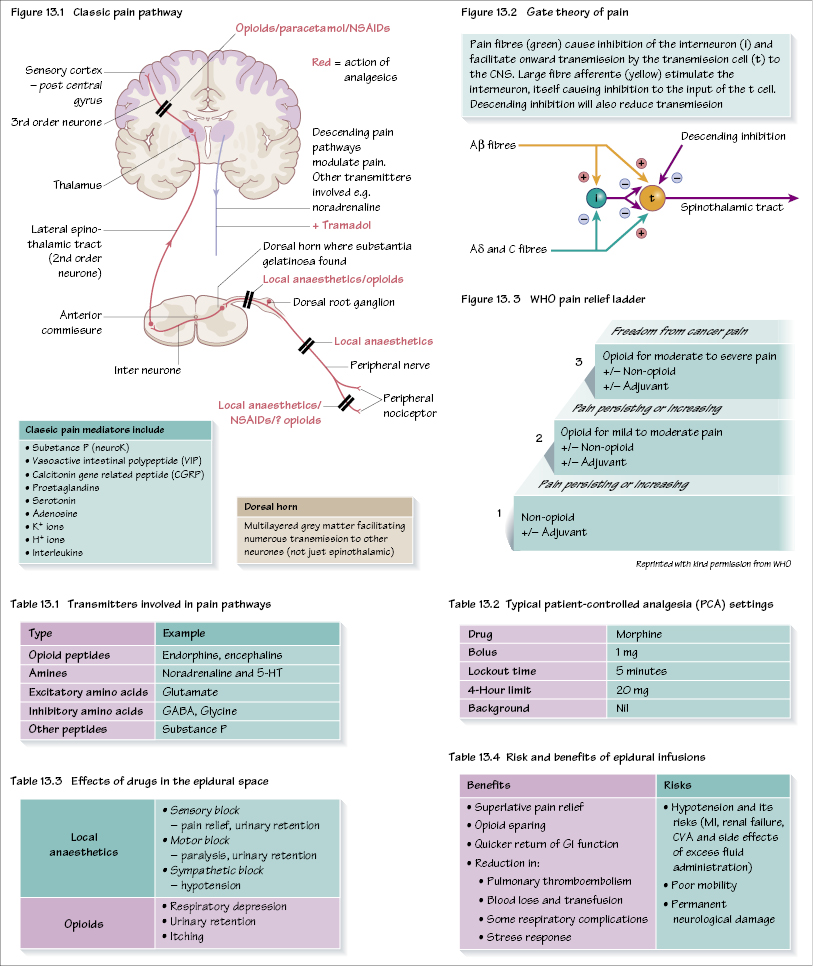13
Acute pain

Acute pain requires immediate intervention. Not only is it a basic humanitarian duty to treat pain, but untreated pain also has a number of adverse sequelae:
- Patients may not be able to mobilize adequately, predisposing to increased risk of DVT and inability to cooperate with physiotherapy.
- For abdominal and thoracic surgery unresolved pain may cause the patient to breathe at low lung volumes. This, in combination with decreased ability to cough, results in basal airway closure and retention of pulmonary secretions, leading into a spiral of hypoxia, lung collapse and predisposition to bacterial infection (pneumonia).
- Severe pain may cause a marked sympathetic response (tachycardia and hypertension), which are undesirable especially in patients with heart disease (e.g. angina).
Pain following surgery is usually relatively short lived and even following the most painful operations (thoracic and upper abdominal) is significantly reduced in intensity by 48–72 hours. Peripheral surgery may only necessitate pain control for 24 hours or so. Patients need to have their pain control discussed in advance so they know how it will be managed. Although much of acute pain is postoperative, there are many other causes: preoperative surgical (renal colic, peritonitis), medical (acute MI) and trauma (rib fractures).
The pain pathway (Figure 13.1) is fundamental to appreciating the mechanism of action of different analgesics and understanding multimodal analgesia. Pain from pain nerve endings (nociceptors) produces a signal that is carried to the dorsal horn of the spinal cord. The are two nerve pathways: sharp pain is transmitted by myelinated Aδ fibres and duller-onset pain is transmitted by unmyelinated C fibres.
There are numerous transmitters involved in pain transmission (Table 13.1). At the spinal cord level the impulses are transmitted to the thalamus by the spinothalamic tract. From there, neurons project to the somatosensory area in the postcentral gyrus where the pain is perceived.
At various stages in the pain pathway the process can be modulated or changed, thus similar injuries can produce vastly different perceptions. Modulation incl/>
Stay updated, free dental videos. Join our Telegram channel

VIDEdental - Online dental courses


